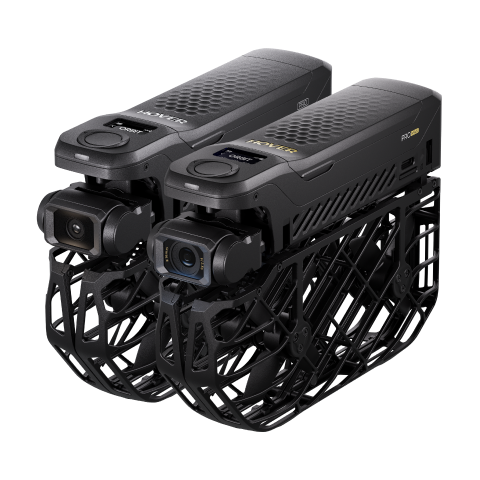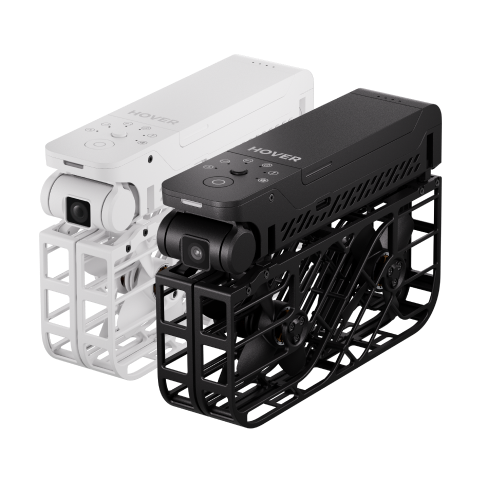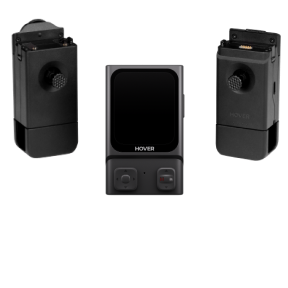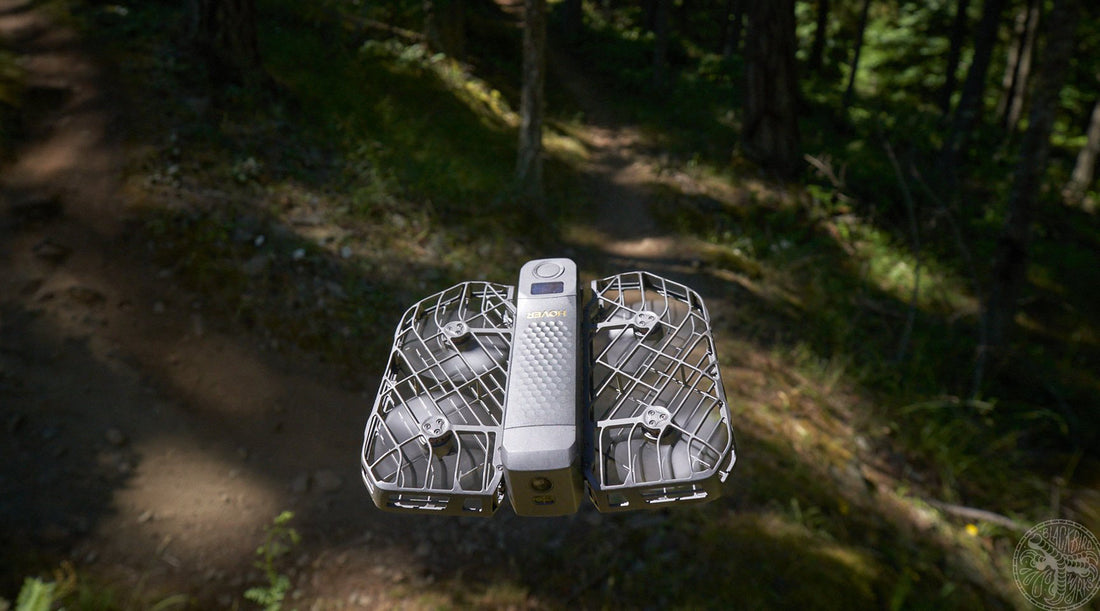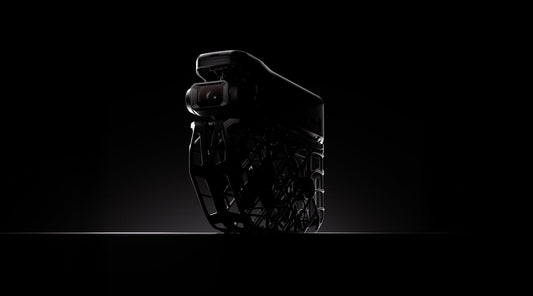Words Deniz Merdano Photos Deniz Merdano Video Deniz Merdano
Did you know you needed an autonomous drone in your life? One that will capture your ride for the world to see in 8K? The HoverAir X1 ProMax will handle that for you, and it is damn good at what it does. It is impossibly small and light, yet tough enough to withstand a world of abuse. It even has enough computing power to help with your 11th grader's calculus homework. I am partial to toys and especially the ones that have cameras and propellers attached to them. In the past, I have referred to imaging drones as the "eMTBs of photography" to poke fun at photographers who won't climb a damn tree to take that get a shot.
Not everyone can soar like George Stainmetz or Yann Arthus-Bertrand on ultralights or hanging out of helicopter doors. In my dreams, I do. I've been in a helicopter once, and I was far too excited to shoot through the bubble windows with a real camera. My excitement was contained to the vertical phone clips of the mountains in Whistler. At around $400 for a 15-minute ride, there aren't a whole lot of opportunities to capture mountain bikers from above but with the right $1,200 tool, I too can get some new angles.

Cowichan Bay from above. It was quite gusty, but the Hoverair had no problem dealing with the wind.
HoverAir offers three autonomous drones with increasing features and complexity. The X1 Pro and the Promax are based on the same chassis, while the X1 is a barebones, entry-level version. Here we have the X1 Promax for photographers and filmmakers alike.
HoverAir X1 Promax Specifications
- 192.5g
- Small enough to fit into a jersey pocket
- Folded: 105 x 149 x 34 mm
- Unfolded: 173 x 149x 39 mm
Video Resolution
- 8K @ 30 / 25 / 24fps
- 4K @ 120 / 100 / 60 / 50 / 30 / 25 / 24fps
- 2.7K @ 60 / 50 / 30 / 25 / 24fps with HDR option
- 1080p @ 60 / 50 / 30 / 25 / 24 with HDR option
- 4K @ 30 / 25 / 24fps in Vertical mode
Impressive numbers from a sub-200-gram drone. Why is it important that this drone is less than 200g? Apart from the obvious, being under 250grams makes the HoverAir a micro drone that doesn't require a piloting licence to fly in non-restricted zones. In partially restricted zones, you can visually guide your drone and stay out of the way. While the overall rules for flying drones are complex in Canada, here is a quick chart for micro drones.
Being light also means longer run times. The HoverAir will fly for 17 minutes on a single 1920mAh battery. With the Cycling Bundle, you get three of those, and that is plenty of time to capture some cool stuff. When you do exhaust your batteries, it is a manageable dead weight.
Bundles and Accessories
You can purchase the Promax alone. Just the drone and a battery will cost you 700 CAD (and the same in USD). You will most likely go for the cycling bundle, which has three batteries, the beacon, various mounts and a nifty carrying case that will straddle your top tube. The case will hold just about everything and is well made. I would never use it on a mountain bike, but it works great for storage and general transportation.
For cinematic purposes, the Control Bundle is the most useful. It adds joystick controls to the beacon and allows for full control of the drone. With the controls, you can also unlock the full 60km/h flight speed. Your smartphone clamps onto the bottom of this contraption for POV controls, and manual flying becomes a heck of a lot more fun and precise compared to the touchscreen controls through the app. I've gotten comfortable flying the drone fast with the left joystick controlling the height and rotation. The right joystick controls the forward, backward and side-to-side movements. The wheel under your left index controls the camera movement, and the trigger under the right index controls the shutter. Simple and customizable within the app.

Brett Tippie and his daughter crossing the finish line at BC Bike Race.
To App or not to App
The Hover X1 Promax is fully controllable from the drone itself. With most of the autonomy built into the hardware, you can fly and get results straight out of the machine. Technically, you don't even need a phone to operate the device. The HoverAir talks, and it talks plenty, announcing its follow modes and distance, and cycling through those modes with a single button. The more you use the drone, the more modes you unlock as well. It wants you to get experience before you venture too far into the wild, ill-equipped for too many variables. It probably wants you to take it to your leader, too. There are cinematic shooting modes like Hover, Indoor Follow (exceptionally good), Dolly Track, Dolly Zoom, and Side Track. Hover announces the mode you selected, and is ready to launch immediately from your hand or any flat surface. The start-up time is short, and you can have the X1 Promax in the air in less than a minute. If faffing around is frowned upon for a particular ride, this is good news.

Screen grab of a 4K30 file from MegaVolt this year. Dave Tolnai, Trevor Hansen and Pete Roggeman.
The app adds another layer of functionality to the HoverAir. As you turn the device on and launch the app, it announces any pending updates to the drone, the battery level, and, if you have it connected, the beacon will be prompted. This can sometimes come as a surprise on the mountain when trying to film because it may ask you to do a 500MB update before giving you access to the buttons. The developers are pushing updates often. While they are not usually this big, it is great that the stability of the platform increases with every firmware release. You can also postpone the update and complete it when you are on WiFi. The app will also let you adjust the parameters of autonomous modes like cycling mode: how far back the follow needs to be (close, mid or far), how high the follow angle needs to be (flat or high), along with the environment you are riding in. You can choose "narrow routes" for sharper turn angles and faster drone reaction, or "open areas" for smoother and more cinematic follow. I've tried both, with some success.
Out in the Real World
I've had some mixed results with the HoverAir X1 Promax on the North Shore, Sunshine Coast, Okanagan, and Vancouver Island. During the honeymoon stage, everything was quite impressive. From the single button launch to following me around the house and the yard, everything seemed extremely impressive. The reality for trail use was a little mixed on the dense North Vancouver trail network. First of all, no, you do not need to film yourself with a drone in the local trail network on a Sunday. The obnoxiousness of such an act should be punished. Not only will you not be going down John Deer at speeds so impressive they need documentation, but the disruption of the drone flying around a crowd of people will ruin everyone's day. HoverAir best practices are when the trails are quiet and the view in front of you is most rewarding to the viewer. Think Sedona, Utah, Colorado. Higher speeds and bigger vistas are where this action makes the most sense.
If your riding buddies are keen to play for the sake of filming, you can get fun results autonomously flying the Hoverair. We shot the Santa Cruz Bullit video with the Hoverair and had a blast doing it. It crashed hard a couple of times, and the extremely durable exoskeleton did a great job protecting the propellers.
During one outing, shooting Tim Coleman and the Yeti MTe, the HoverAir decided not to follow. After a few attempts It became obvious the lighting and the tree canopy were going to be issues. I insisted on capturing some more footage, so I launched the drone manually to control it from the Phone. This is when things went sideways, and the drone took off vertically. About 15 seconds later, the transmission was lost, and so was the drone. Over the course of 2 days, I spent over 8 hours searching for it with no luck. This experience revealed some of the biggest weaknesses of the HoverAir for me.
Visibility
The HoverAir X1 Promax is a tiny, all black drone and there are no marker LEDs on the underside. When operating in dense forest canopy, it is difficult to see. This has two implications for me. When I am using it as a follow drone, I am relying on it to, well, follow me down the trail. While it does a very good job of avoiding bigger trees, small branches hanging on to the trail can often interrupt the chase. Then you are hundreds of meters down the trail, assuming that you are being chased, but the drone is stuck behind a tree, hovering, and it can be difficult to find. Propeller noise is your best bet for that scenario, but often that is not audible until you are close. LED markers would have been useful. Hopefully Hoverair will build in some for the next gen device. High contrast, bright chassis colours could also work, although It would make the device look cheap and nobody wants that.
Virtual Visibility
Unless you have launched the app before launching the drone to follow you, you won't be able to use the "Find My Device" function. This is not much of an issue if you are flying the drone from the app without the joystick controls, but if you are relying on the drone's software to launch, recognize, and follow you, without the help of the app, you are own your own trying to find it in the forest if it stalls or crashes. There is an option in the app to let the drone scream an audible warning when it crashes (not when it stops following). This is useful, but by default, this option is turned off. Find it and turn it on. When the drone is interrupted by a stall or a crash, it stops recording. This means you can't look at the footage on your phone to estimate the last few seconds of the crash.
Battery Connection
The HoverAir has 1920mAh batteries that can be swapped very quickly on the go. Land the drone, power it down, and pull on the battery to remove it from the chassis. Reverse the process to install. This ease of removal means, if you crash the drone hard enough, the battery may pop out, shutting it off. This means you won't be able to benefit from the Find My Device function or the audible beacon, which is most likely why I lost that first drone. The second one HoverAir sent has been working well so far.
What do I think?
I have come around since my early days of drone bashing. I have two imaging drones at this point. The bigger one, a Skydio, does not pack well and while it has more advanced obstacle avoidance features, it relies heavily on visual sensors for flight so it won't fly indoors, at night or when it's sprinkling. It is also harder to get it to move around trees due to its size and features. The Hoverair is an exceptional tool for photographers and videographers to grab 8K resolution footage using an impossibly small device. Its agility almost makes it an FPV drone if you pair it with the joystick and the beacon. I have used the Hoverair more in manual mode than I have in autonomous modes in the last few months. Taking it to BC Bike Race, Megavolt and even on simple trail rides, has been a great change in perspective. While the ultra wide angle 16mm lens can be limiting for story telling, it is a fun tool to have in a photographer's arsenal. The Mavic Mini 4 Pro is the obvious competition to the Hoverair but the durability and the propeller guards make the Hoverair an easier device to enjoy as a professional or prosumer in the woods.
The image quality is excellent thanks to the 1/1.3" sensor and 10-bit processing, and 64GB of internal storage means no additional faffing or expense to start recording. The user interface is easy to use, going so far as to speak out the modes to you. While enthusiasts may enjoy its advanced tracking features, professionals will appreciate the manual controls more. With little improvements to the visibility in the forest and longer radio range for remote flying, HoverAir would have a more secure place in my bag of tools out on the trails.
This technology is not cheap, but the results speak for themselves.
The original source from: https://nsmb.com/articles/hoverair-x1-promax/
